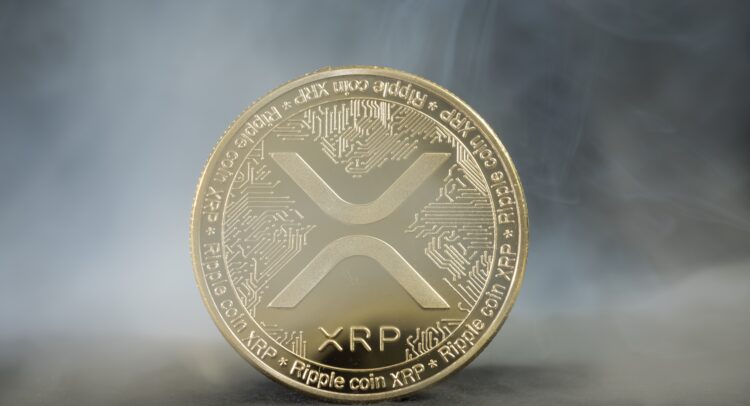
The idea of a U.S. cryptocurrency reserve is no longer just about Bitcoin. While Bitcoin’s fixed supply and reputation as “digital gold” once made ...
TipRanks
You can visit the page to read the article.
Source: TipRanks
Disclaimer: The opinion expressed here is not investment advice – it is provided for informational purposes only. It does not necessarily reflect the opinion of BitMaden. Every investment and all trading involves risk, so you should always perform your own research prior to making decisions. We do not recommend investing money you cannot afford to lose.
Collaboration is the Solution to Web3’s Fragmentation Crisis

The post Collaboration is the Solution to Web3’s Fragmentation Crisis appeared first on Coinpedia Fintech News Fragmentation in Web3 is an unfortunate fact, with each camp championing its own technology. Blockchains operate in silos, which deepen tribalism instead of encouraging meaningful collaboration. The explosion of L2 solutions on Ethereum has deepened fragmentation, with each blockchain actually competing against Ethereum. Some analysts cite this fact as the reason for ether’s stagnant price. Others take this view even further – that the price of ether can only go down. They argue that Ethereum’s scalability results in fewer users relying on the L1 blockchain, opting to leverage L2 solutions instead. These solutions pay very low fees, and Ethereum’s revenues are correspondingly lower. The end result could be a divergence between the price of ether, dropping due to lower fees, and Ethereum’s L1 utility (increasing by the number of L2 users). A third argument is that some successful L2 solutions might end up detaching from Ethereum in the long term, taking their user base with them. Bitcoin and Ethereum should cooperate, not compete Bitcoin boasts a solid security model based on UTXO or Unspent Transaction Output – an output that hasn’t been used as an input in a transaction (transferring Bitcoin from one address to another). On the other hand, Ethereum is renowned for its flourishing dApp ecosystem. Both blockchains focus on decentralization but fulfill different purposes. Ethereum’s rich functionality enables the execution of smart contracts and applications, while Bitcoin is mainly a store of value. Despite their differences, Bitcoin and Ethereum shouldn’t compete. Bitcoin should be used as a stable asset and a store of value, while Ethereum interacts with the dApps running on it. An investor could use Ethereum to access DeFi services in a portfolio and Bitcoin – to preserve value. Apex Fusion bridges the best of Ethereum and Bitcoin, building on the concept of uniting Web3 and moving beyond competition to create a scalable and collaborative blockchain ecosystem. The platform promotes a unified ecosystem that is inclusive, neutral, and designed with interoperability in mind. It provides a platform where existing projects and developer communities can innovate, integrate, and deploy. Apex Fusion’s ecosystem is comprised of three layers designed to optimize security, scalability, and decentralization from the start. These three interconnected networks – Prime, Vector, and Nexus – each serve a unique purpose. Prime Network, an L1 blockchain based on UTXO, is the foundational Apex Fusion ecosystem layer that provides security and decentralization. Vector Network, an L2 on UTXO, is a secondary layer that enhances performance and scalability and is designed for high-throughput services and applications. Finally, the EVM L2 solution Nexus Network focuses on speed and cost-efficiency, handling complex transactions and smart contract execution. The three chains are connected through the Reactor Bridge, enabling interoperability and efficient interaction throughout the ecosystem. This unique architecture offers users more flexibility by making dedicated blockchains available, which are optimized for a specific use case. The Prime layer ensures a predictable, decentralized, and secure environment. Traditional L1 blockchains compete for execution, but unlike them, Prime emphasizes liquid staking, giving developers a neutral foundation on which to build. The ecosystem’s core is interoperability. It’s designed with seamless cross-chain interaction, allowing projects to use multiple blockchain technologies frictionlessly. Ethereum developers can use dedicated chains with full EVM compatibility and don’t have to compete with L1 solutions. Apex Fusion is entering an exciting development stage, namely the Prime Mainnet launch. Stake pool operator (SPO) onboarding is underway, guaranteeing a fully decentralized network from the start. The platform is finalizing cross-chain interoperability tools, enabling frictionless interactions between its three layers. Early adopters will receive participation rewards and engagement incentives. More than 80 SPOs are operational on the testnet, ensuring resilience and stability. We’re all paying a high price for fragmentation The problems caused by Web3 fragmentation are evident . Monetary incentives are the primary driver of end-user and project activity at the moment. Estimates suggest that there are at least 1,000 blockchains, and most of them replicate a small number of successful use cases without end and without innovation. Ultimately, users are unable to take advantage of the ecosystem in its entirety, which discourages adoption and reinforces the bias that Web3 is complex. This bias misleads people into believing that the complexity is purposeful and conceals illicit activities. These misconceptions compromise exploration and experimentation. The transition from fragmentation to collaboration holds immense potential. Simplifying onboarding will lead biases surrounding Web3 to dissipate. Partnerships with reputable projects can enhance Web3 platforms’ trustworthiness and credibility. For example, Apex Fusion’s Reputation System quantifies and validates contributions, ensuring trust and transparency in decentralized environments. This development has given rise to the concept of “trust through reputation.” A blockchain project that specializes in developing smart contracts can cooperate with a decentralized oracle platform to improve its apps’ reliability and security. Such a partnership would allow the blockchain to tap into the oracle’s expertise. The oracle would, in turn, refine its technology by gaining access to more real-world use cases. Blockchain projects can collaborate on decentralized identity solutions, cross-chain communication protocols, or other interoperability standards. Such collaboration enhances user experience by enabling interactions. Partnerships within Web3 can enhance resilience and mitigate risks. By diversifying partnerships, projects can reduce reliance on a single service provider or technology. What’s more, collaborations frequently involve due diligence on future partners, helping identify potential weaknesses or risks early on. Teams can address issues promptly, minimizing the likelihood of project failure. Web3 projects can cooperate on educational programs or hackathons, which encourage community involvement. These activities benefit individual projects and unite decentralized communities. At its core, Web3 is about people, but project silos and tribalism harm exploration. Apex Fusion aims to propagate an environment where projects and developer communities contribute their unique advantages to a shared ecosystem and grow together. TipRanks

DOGE ETF Could Open the Floodgates—Will XYZVerse (XYZ) Be the Next Meme Coin to Hit Wall Street?
The approval of a DOGE ETF could signal a breakthrough for meme coins in mainstream finance. As doors open for Dogecoin, questions arise about which coin might be next. Could XYZVerse (XYZ) be poised to make a similar leap onto Wall Street? This article explores the potential of XYZ in the evolving landscape of digital currencies. Trump’s Inauguration Sparks Crypto Chaos: $XYZ Meme Coin Ready to Deliver a 99,900% Knockout Donald Trump’s inauguration has triggered a seismic shift in the crypto market, setting the stage for a bull run like no other . As the dust settles, major coins limp forward with uninspiring double-digit gains, while meme coins are stealing the show . PNUT’s recent 4,500% surge? FRED’s 6,000% explosion? Ancient history, buried in the ashes of short-lived hype. These coins buckled under selling pressure, leaving FOMO-ridden investors licking their wounds. But the crypto battlefield doesn’t wait for the weak — a new titan has emerged with plans to obliterate profit records and deliver an earth-shaking 99,900% surge . Take the XYZ Side – The Undisputed Champion of Meme Coins $XYZ Breaks into the Ring to Knockout Meme Coin Legends Meet $XYZ – the first-ever all-sports memecoins for true crypto degens hungry for 1000X profits . This is the token for those who thrive on the thrill of competition . As Trump takes the reins, the crypto market is set to erupt so the competition is getting fierce . Only the strongest tokens can survive in this no-mercy arena. Here comes the dawn of a crypto era for those with balls of steel — the guys like Joe Rogan and Dana White — who’d proudly rally behind Trump’s team. With such true men of business on board, there is no place for old pussy meme coins, it’s time for real brutal coins . Fueled by the sports mentality , the $XYZ token has emerged as the ultimate contender ready to crush competitors and rocket to the moon on Elon Musk’s mission. $XYZ is on its way to the winner’s podium to become a badge of honor for those who live and breathe sports and crypto. $XYZ Already Delivers Even Before Hitting the Market The $XYZ presale is underway, providing access to the token at a special pre-listing price. Launch Price : $0.0001 Price Now : $0.002 In just a couple of months, $XYZ already soared over 2000%! Next Stage : $0.0025 (+25% jump incoming) Final Knockout Target : $0.1 From launch to the token generation event, $XYZ is targeting a mind-blowing 99,900% surge! If you’re not in, you’re out. The $XYZ presale is already smashing through stages with the speed of a champion’s knockout blow. Join $XYZ Presale Now and See Your Pennies Grow Into Millions! Dogecoin: From Internet Joke to Crypto Superstar Dogecoin started as a joke in 2013, created by Billy Marcus and Jackson Palmer. They wanted a fun alternative to serious cryptocurrencies like Bitcoin. Using a Shiba Inu dog as its logo, Dogecoin caught people’s attention online. Unlike Bitcoin’s limited supply, Dogecoin has no maximum limit, with 10,000 new coins mined every minute. Initially seen as a “memecoin,” its value soared in 2021. Social media buzz, especially from Elon Musk’s tweets, pushed Dogecoin into the top ten cryptocurrencies, reaching a market value of over $50 billion. This rise showed the power of community and how social media can impact financial markets. Today, Dogecoin’s future seems full of potential. Its technology allows for fast and cheap transactions, making it practical for everyday use. The unlimited supply means there’s plenty to go around, which could help with wider adoption. Compared to other coins like Bitcoin and Ethereum, Dogecoin is more accessible due to its lower price. In the current market, many investors are looking for affordable cryptocurrencies with strong communities. Dogecoin fits this trend and stands out as a unique option. While it began as a joke, its growing acceptance suggests it might be more than just a passing fad. Conclusion Though DOGE remains popular, XYZVerse (XYZ) could become a significant player by uniting sports fans and meme culture in the current bull market. You can find more information about XYZVerse (XYZ) here: Site , Telegram , X Disclosure: This is a sponsored press release. Please do your research before buying any cryptocurrency or investing in any projects. Read the full disclosure here . TipRanks











